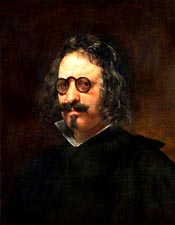Francisco Gómez de Quevedo Villegas y Santibáñez Cevallos, a Spanish nobleman, politician, and writer, was born on September 14, 1580, in Madrid and died on September 8, 1645, in Villanueva de los Infantes, Ciudad Real. His family hailed from Vejorís, Cantabria. His mother, María de Santibáñez, served as the queen’s lady, and his father, Pedro Gómez de Quevedo, held positions in the royal palace. Quevedo’s early life was impacted by his disabilities – being lame and severely nearsighted.
Quevedo was a knight of the Order of Santiago from 1618 and became the lord of Torre de Juan Abad in 1620. He contributed significantly to Baroque Spanish literature, and was a contemporary and great rival of his fellow poet Luis de Góngora. Quevedo’s work encompassed poetry, narrative, theatre, and philosophical and humanistic texts.
Educated in classical languages, French, Italian, philosophy, physics, mathematics, and theology, Quevedo attended Colegio de San Pedro y San Pablo and the University of Alcalá, although he did not complete his studies. He later studied at the University of Valladolid between 1601 and 1605. His early works, often satirical, circulated under pseudonyms, attracting Góngora’s attention and initiating their lifelong feud.
Quevedo’s career involved significant political elements. He served as secretary to Don Pedro Téllez-Girón, future Duke of Osuna, and accompanied him to Italy in 1613. Quevedo played a part in managing the Treasury of the Viceroyalty in Naples and joined the Academia de los Ociosos. His support of the Duke of Osuna, viceroy of Naples, led in 1918 to his knighthood in the Order of Santiago.
Despite his courtly connections, Quevedo fell into disgrace and was first imprisoned in Uclés and then forcibly retired to the Tower of Juan Abad. His literary output during this period included some of his best poems and treatises on various subjects.
Quevedo was a proponent of Conceptismo, notable for its conciseness and wit. His poetry ranged from satirical to deeply existential, reflecting his complex personality and views. His work was significant, both for his stylistic contributions and his role in the cultural landscape of the Spanish Golden Age.
More by this author
